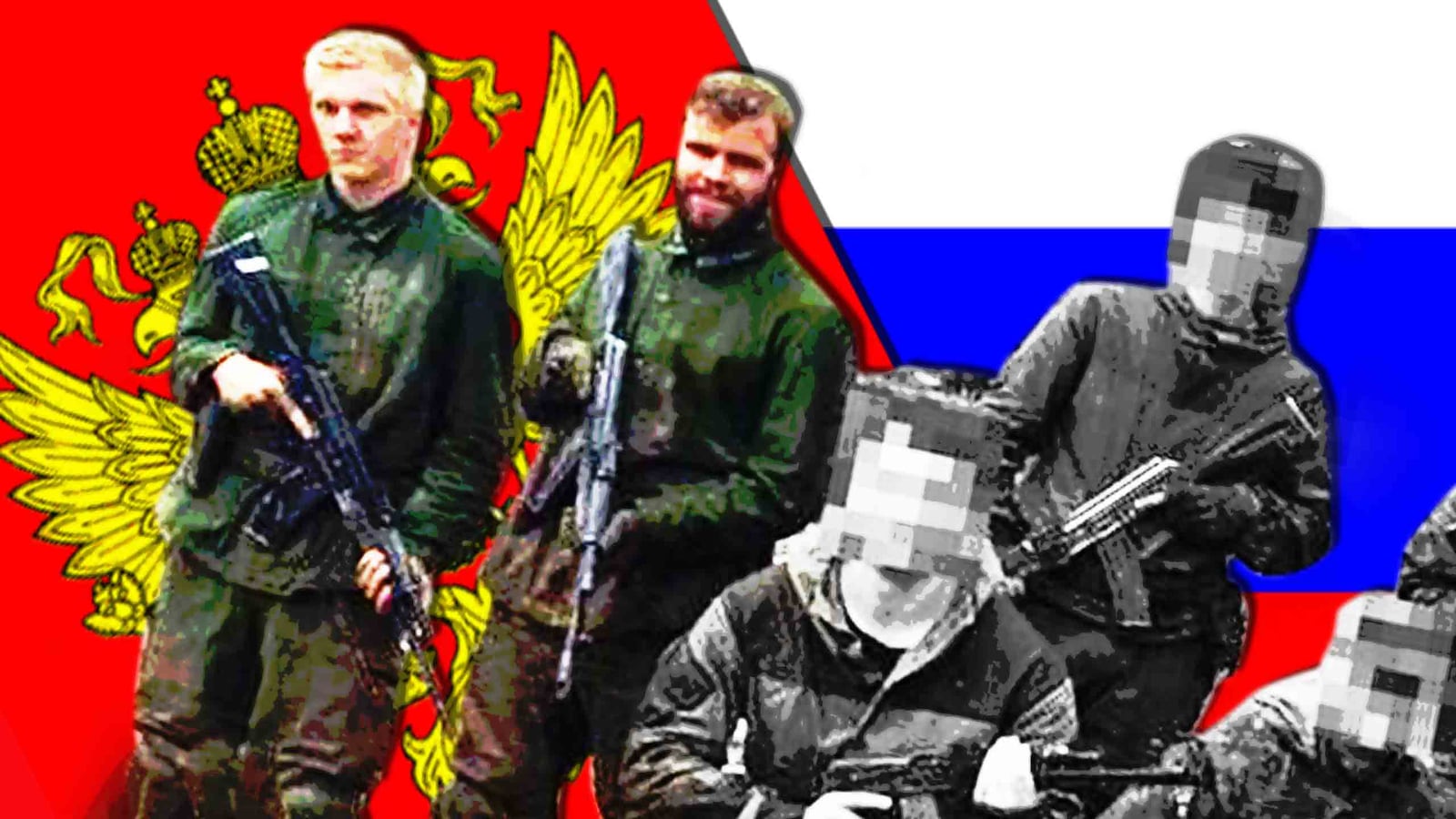GOTHENBURG, Sweden—A few months before they tried to blow up a home for asylum seekers here in Sweden’s second largest city, and succeeded in seriously injuring the cleaning man, 23-year-old Viktor Melin and 20-year-old Anton Thulin complained to each other over Skype that the white supremacist hate group they were part of wasn’t tough enough for them anymore.
Faced with spending another summer doing combat training with rubber swords, they decided to go to Russia to play with Kalashnikov rifles and Makarov pistols and live ammunition instead.
“Partisan” is a paramilitary course set up by the ultranationalist Russian Imperial Movement (RIM) that claims to train civilians for upcoming “global chaos.” Many Russians who attend the sessions reportedly are interested in the thrills of abseiling down abandoned buildings and trying out other extreme sports at a cheap price. Likewise, Melin and Thulin say they went “for fun.”
But Mats Ljungqvist, the Swedish attorney who last month finished prosecuting Melin, Thulin, and their sidekick, 51-year-old Jimmy Jonasson, for a series of bomb attacks, is not convinced.
“Attending this paramilitary camp in St. Petersburg was a key step in Melin and Thulin’s radicalization,” Ljungqvist told The Daily Beast during the trial. “We also believe it may be the place where they learned to manufacture the bombs that they used in Gothenburg.”
When police officers arrested Viktor Melin in January, they already knew a lot about the 23-year-old, who previously had been accused of everything from trading narcotics to beating up a man for daring to compliment his beard in the bathroom of an Italian restaurant. And that was before he got involved with the hate group whose members are sneered at by the rest of Sweden’s ultra-right as “anti-intellectual meatheads.”
Keep in mind the hirsute Melin is a young man who claims to have cut off his own pinky with an axe in order to punish himself after he relapsed on his porn addiction. At least this is what he told a police detective who was questioning him earlier this year. The officer then asked him if that wasn’t a bit too extreme. “It’s good to be tough on yourself,” Melin bragged.
Other meatheads have been quick to distance themselves from the accusations that currently face Melin and his two fellow neo-Nazi activists.
“We do not promote or advocate bombing bookstores,” the group called Nordic Resistance said in a statement on its website shortly after Melin’s arrest, referring to the attack on an alternative hang-out in Gothenburg in November, which Melin is also accused of engineering.
This statement was completely in character for a group that stubbornly refuses to take responsibility for the violent penal code breaches of its members, despite writing in its handbook that “we can only win by physical struggle” and encouraging its members to carry knives.
What was surprising, however, was a photo that was uploaded on VK, the Russian social media site, a few months before the attacks. It shows both Melin and Thulin posing for a group photo in the midst of the sunny-looking countryside, all dressed up in military prints and clutching air rifles. Melin is smiling like a child, while 20-year-old Thulin is pouting, with his short blonde hair spiked up diagonally.
***
Denis Gariev, the former soldier who runs Partisan on behalf of RIM, claims that his organization hosts a lot of people who come from abroad. They get in touch after finding out about the camp online.
“We are open to all,” the ex-history student tells The Daily Beast.
Especially to people from Nordic Resistance, it seems.
Melin and Thulin told the police they didn’t see anything strange about their Russia trip—after all, other people from their movement had attended Partisan as well. This seems weird, given that the ultra-right in Sweden is traditionally more skeptical of the Kremlin than far-right fringe groups in the rest of Europe.
But according to Jonathan Leman, a researcher for the anti-racist pressure group EXPO, there was a tactical shift of consciousness within movements like Nordic Resistance over the course of the Ukraine crisis.
“As the role of the EU and the United States in the war becomes more apparent,” he told us, “you could see that pro-Kremlin propaganda was having a greater impact on far right websites in Sweden.”
Initially, RIM was useful to the Kremlin because it recruited and trained volunteers to go and fight on the side of the separatists in Eastern Ukraine. But now, the movement’s military arm seems to have retreated from doing the Russian government’s dirty work. The focus of Partisan, its website says, is to prepare civilians for “the collapse of civilization.”
That could mean literally anything, but when RIM’s leader, Stanislav Vorobyov, came to speak at a summit that was organized by Nordic Resistance in 2015, he turned up in uniform (which he said should be regarded as a symbol of their joint fight against the “Jewish oligarchs in Ukraine”) and warned about “a full-scale war against the traditional values of Western civilization.” He then made a big deal about donating money to Nordic Resistance, so that they could set up their own political party. Later, he said in an interview that he’d only donated $150.
***
More than ever, Nordic Resistance “sees [RIM] as friends,” Simon Lindberg, the Nordic movement’s leader, tells The Daily Beast. But Nordic Resistance is not the only neo-fascist group in Europe that is treating a shared infatuation with hand-to-hand combat and intimidating selfies as a basis for forging the alliances that can have confusing, destabilizing effects within Europe.
The pro-Kremlin ultranationalist outfit Stiag, or Flag, has had a bunch of people from the Slovak Revival Movement attend its military training courses. (Slovak Revival is a small-time neo-fascist cultural organization that has recently experienced such a surge in popularity that its leaders decided to register it as a political party). And even more bizarrely, 76-year-old István Győrkös, the ex-leader of the Hungarian National Front, who is now sitting in jail after killing a police officer last year, used to stage mock combat exercises with Russian intelligence officers in the forest near his home.
“It’s a social activity,” Lorant Gyori, an analyst who studies Russia’s outreach to extremist groups, points out: “In Soviet times, the socialist elite in Hungary used to hunt together and comrades from Moscow would come and hunt as well… Obviously these military training groups are more serious though.”
The Kremlin could crack down on the nationalist movements’ semi-legal military activities, especially RIM, which wants to restore the monarchy and showcases itself as anti-Putin. But no.
Alexander Verkhovsky, who is the head of the Sova Center, an anti-extremist organization based in Moscow, says it is a “mystery” but suggests that the government might be tolerating these mini militias as “a mild way to adopt Donbas veterans without disturbances.”
For the moment it appears RIM’s political influence within Russia is dwindling, but the same cannot be said for Nordic Resistance, which recently has been endeavoring to rebrand its thugs-and-hooligan status by setting up a political party (as RIM encouraged them to do) and hatching plans for an English-speaking website.
In its statement to distance itself from Melin’s bombs, the group also said that it would be “impossible” for it to continue its “legal political activities” if its members “were all sitting behind bars.”






